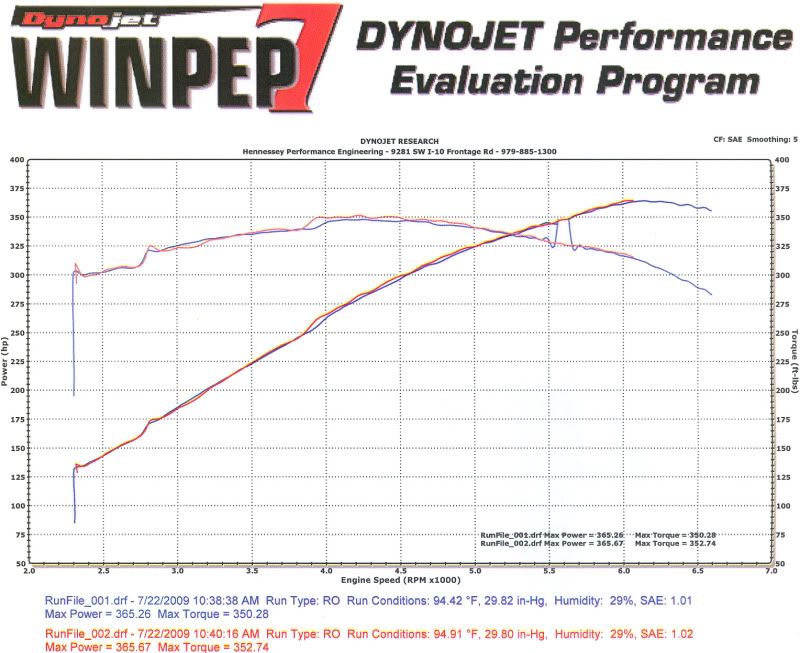C
cmr
Guest
Does any one have stock rwhp numbers from a dyno day? I understand that everybodys dyno is going to produce diffrent numbers but I am looking to compile an average. This is for xlrv owners. Thank you for your time.
Follow along with the video below to see how to install our site as a web app on your home screen.
Note: This feature may not be available in some browsers.

Does any one have stock rwhp numbers from a dyno day? I understand that everybodys dyno is going to produce diffrent numbers but I am looking to compile an average. This is for xlrv owners. Thank you for your time.
Had the V dyno'd at Vengeance Racing, bone stock and rwhp was 356. Had it tuned at Xtremenotorsports and the bone stock numbers were 381 rwhp and 389 torque. Should equate to just under 500 at the crank.better numbers than my C6.
Can you tell us exactly what they did?
Thanks,
Floyd (BB)

Have you had any modifications done prior to the tune. Intake, exhaust, plugs, etc...





I brought my car back to 100% stock before this dyno run was done... its pretty hot and humid here in Houston... also, I had to drive 45mins to get to Hennessey Performance out in Sealy, TX so the engine was plenty warmed up and heat-soaked... the chart shows a 95deg ambient temp which also didn't help things... my guess that these numbers are about as bad as they'd get.




 might get a second opinion
might get a second opinionNo way should your HP be more than Torque,might get a second opinion
Could heat soak explain the differences?
My XLR-V was almost driven an hour on the way to the dyno where it was hooked up pretty much when I arrived (they were waiting for me). Additionally it was pretty humid and it was 95deg.
The first graph in the thread was done in Ohio in Feb... I imagine it must have been pretty cold then - perhaps less than 40deg?
The 2nd graphin this thread was done in Indiana in May... I would imagine it was still cold then there too.
Thoughts?

Not sure about the technical stuff but I drove my XLR-V 300 miles to my tuner and it was super hot and high humidity. I have never seen HP numbers higher than torque. Not much experience but have had 23 Corvettes over the years to include two C-5's, one C-6 new generation and in all cases the torque was higher than the HP. This is only my personal experience. I live in Kennesaw, GA and my tuner is in Florida.
Hmm.. I'll ping Hennessey tomorrow and see what they say about it...
Do you have the dyno graphs of your car?
GM rates the crank output to be 443 hp and 414 ft-lb of torque - thats more hp than torque - what's your thought on that?
Go to post #10 those are my numbers. What is posted in the literature is generic, each engine is hand built, none the same, but all the ECM's are generic. Takes a tune to get maximum performance. My engine for example is a LC3 which is supposed to be 469 HP, it is a one off, show car with the ZR6 RPO code. I was real happy with what my tuner did. My C-6 (2006) corvette only dyno'd 352 but was rated by the factory at 400 hp. All dyno's are different my first baseline dyno was 354 rwhp and blew away every other CTS V that was there. Just notice that you have the 2006 and I have the 2009, don't know if that makes the difference.
No way should your HP be more than Torque,might get a second opinion
